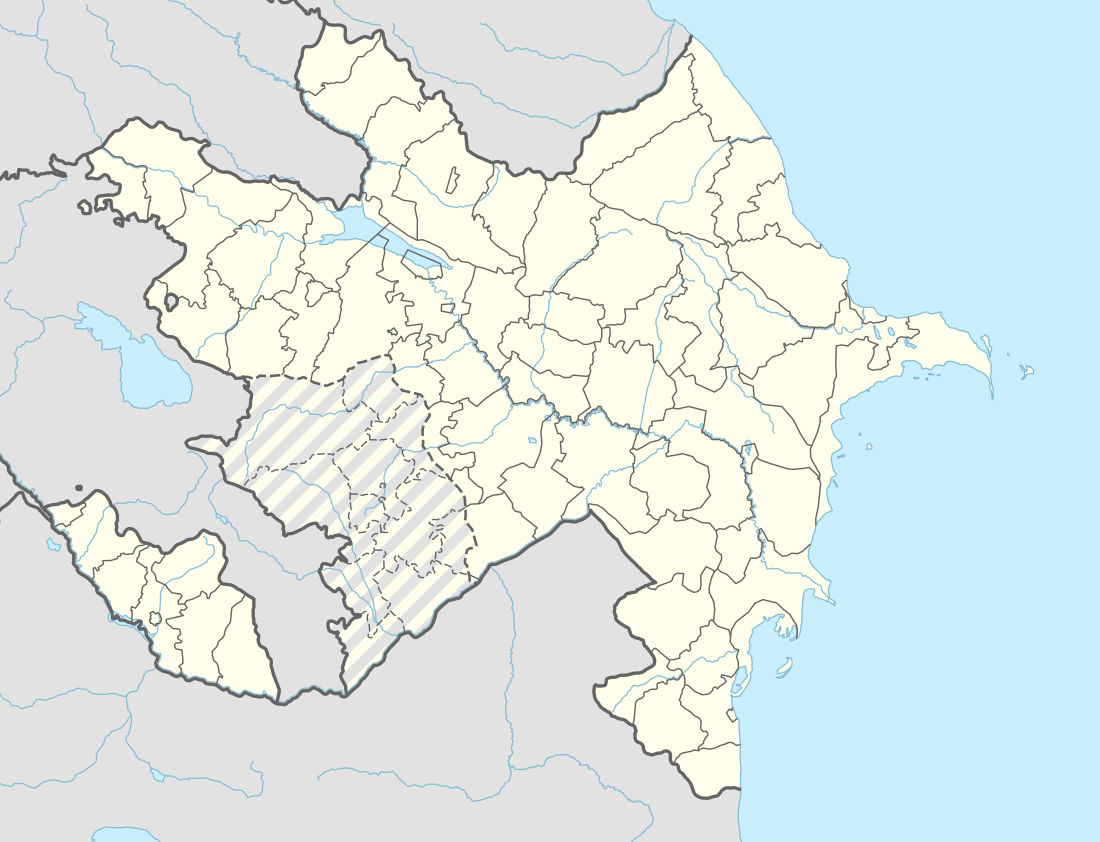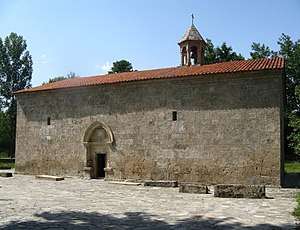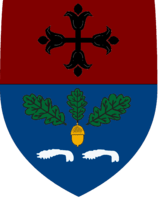Nij, Azerbaijan
| Nij | |
|---|---|
| Municipality | |
 Nij | |
| Coordinates: 40°56′42″N 47°40′09″E / 40.94500°N 47.66917°ECoordinates: 40°56′42″N 47°40′09″E / 40.94500°N 47.66917°E | |
| Country |
|
| Rayon | Qabala |
| Population [1] | |
| • Total | 5,744 |
| Time zone | UTC+4 (AZT) |
| • Summer (DST) | UTC+5 (AZT) |
| Climate | Cfa |
The town of Nij (also, Nidzh; Azerbaijani: Nic, in Udi НыъжӀ or НиъжӀ), located forty kilometers south west of Qabala in Azerbaijan, is the world's only settlement of Udi people.[2] It has a population of 5,744.
History
The forefathers of the Udi people were members of one of the twenty six Caucasian Albanian tribes who played an important role in the creation of the state of Caucasian Albania, which was situated in Azerbaijan and in the southern territories of Daghestan (currently in the Russian Federation) in the 4th and 3rd centuries BC.[3]
Ancient Udi was the principal language of Caucasian Albania.[4] The Udi tribe was described in the writings of Herodotus,[5] Strabo[5] and Pliny the Elder.[6] According to these chroniclers, the Udis became politically active following their involvement in the military incursions into Greece of Persian Emperor Xerxes I.
They are the only ethnic minority retaining their affiliation to Christianity in Azerbaijan. The Caucasian Albanian-Udi Apostolic Autocephalous Church is located in Nij. The Udi language is a North Caucasian language. Modern Udis are bilingual in both Udi and the Azeri language.
During the 5th–9th centuries, Christians in Caucasian Albania used the Caucasian Albanian alphabet. As a result of the later political weakening of the State of Caucasian Albania and the Caucasian Albanian Catholicate, the script gradually faded out, and subsequently its usage was discontinued. Currently, the Udi Alphabet uses 52 letters.
The first Udi school and then, subsequently, a Russian rural school, was opened in Nij in 1854. Subsequently a Russian rural school was established. From 1931 to 1933, Udis received education in their own language; in 1937 they began to receive education in the Azeri language.
The settlement of Nij is a unique district, with its unusual planning lay out, transport systems, and its public, private and religious buildings. Nij is also a unique place, as various ethnic and religious groups co-existed throughout the centuries. The settlement of Nij is divided into several quarters, based on the family relationships of its residents. Practically all the names of these quarters are in the Azeri language - such as Hajibayli, Darabag, Daramahla, Vazirli, Farimli, Malbel, Agdamekli, Melikli, Falshyly, Manjyly, Delekli, Chirmakhli and Abdally.
As in their past, Udis are today involved in a variety of vocations, which include farming, cattle breeding, rice cultivation, sericulture, horticulture, poultry farming, craftsmanship and viticulture. Many Udi ceremonies, rites, and calendar days of the Udis are linked to farming.
Traditional ceremonies, rites, beliefs and traditions are the integral elements of an intangible cultural heritage. This is mostly reflected in the names and observance of national holidays. One such holiday is called Comrad, and is celebrated near a church, whereby, according to the tradition, the sacrifice of a black sheep is required. It is worth noting that this rite is similar to the Gurban Holiday (Eid al-Adha) – a sacred holiday of Islam, widely celebrated by Azerbaijanis. One of the popular holidays of the Udi people is Zhogulun Akhsibay, celebrated on the arrival of Spring. On that day, each family cooks a meal called kherse, paints eggs and jumps over bonfires. Many elements of this holiday are similar to those of the Novruz (Spring) Holiday of Azerbaijan.
These unique features of the Udis’ cultural heritage have, in the past, been observed by many scholars and travelers who visited Nij. Throughout the 19th century, information about the Udis, and particularly their language, was studied and published by Russian and Western researchers. Alexander Dumas, the French writer, in his book Tales of the Caucasus, provides detailed information about the specific economic activities, language and culture of the Udis living in Nij.
References
- ↑ Azərbaycan Respublikasının Dövlət Statistika Komitəsi: Qəbələ rayonu
- ↑ Mobili R. Udins: language, religion, folklore and traditions. «Azerbaijan and Azerbaijanis in the world» magazine, №2, july, 2009. С.214
- ↑ Javadov G. National minorities of Azerbaijan. Baku, 2000. p.209
- ↑ Mobili R. Udins: language, religion, folklore and traditions. "Azerbaijan and Azerbaijanis in the world" magazine, №2, July, 2009. p.216
- 1 2 Aliyev K.G. Antic sources of the history of Azerbaijan. Baku, 1987. p.14
- ↑ Trever K.M. Feature stories on history and culture of Caucasus Albania. IV century BC-VII century AD. Moscow-Leningrad, 1959. p.45-46.
Gallery
 Albanian-Udi Jotari Church in Nij
Albanian-Udi Jotari Church in Nij Coat of arms of Nij
Coat of arms of Nij- Mosque in Nij
| Wikimedia Commons has media related to Nij, Azerbaijan. |
.svg.png)